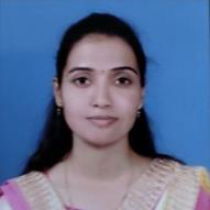
Priyanka R. Pandit
Work place: KIT's College of Engineering, Kolhapur, Maharashtra-416234, India
E-mail: pandit.priyanka710@gmail.com
Website: https//orcid.org//0009-0004-6296-9359
Research Interests:
Biography
Ms. Priyanka Ramesh Pandit is a research student at KIT’s College of Engineering, Kolhapur, India. Her research interests include artificial intelligence, deep learning, and medical image processing. She is focused on developing intelligent algorithms for healthcare diagnostics and image-based classification systems. With a strong foundation in computer vision and neural networks, she is dedicated to advancing practical AI applications in biomedical engineering and related fields.
Author Articles
Acne Types Prediction Using Acne Images based on Modified Link Net-B7 and HR-Net Algorithm
By Priyanka R. Pandit Mahesh S. Chavan
DOI: https://doi.org/10.5815/ijigsp.2025.05.05, Pub. Date: 8 Oct. 2025
Acne is a persistent skin disorder that typically affects children in the age range of 12 to 25. Both inflammatory and non-inflammatory skin diseases can coexist with various types of acne, such as papules, pustules, nodules, cysts, blackheads, and whiteheads. In recent times, the study of acne has been carried out conventionally, with a manual approach for determining the ROI. As a result, the patient's face will be physically counted and marked with the acne that was found in the ROI. This manual method could result in incorrect identification and diagnosis of acne. Moreover, it is still difficult to determine the type of acne related to another. The necessity for patients to visit a dermatologist is growing despite the difficulties in identifying acne manually. For a patient, waiting for the dermatologist to become available is challenging. Thus, an automated application for recognizing acne types is needed, as it may help these individuals. In order to address these problems, a dataset containing images of skin diseases is created. Lanczos resampling, which is frequently used to shift or enhance a digital signal's sampling rate by a fraction of the sampling interval, is employed in the preprocessing of the skin disease data. Subsequently, the pre-processed images are segmented using the Modified Link Net-B7 in order to eliminate noise and correctly categorize images of acne with the segmented skin images. After the model has been trained and validated, the Acne type prediction is forecast using the HR-Net algorithm. The performance metrics for this developed model are FPR, FOR, NPV, kappa, error, accuracy, precision, sensitivity, specificity, f1-score, kappa, training time, testing time, and execution time. Performance metrics values of 95.17%, 94.10%, 92.33%, 96.34%, 93.15%, 85.74%, 4.83%, 4%, 6%, 95%, 7.7%, 1492, 23 and 1515 have been reached for the proposed approach. Therefore, compared to the existing models, Acne type prediction using the different types of Acne disease images based on modified Link Net-B7 and HR-Net algorithm performs better.
[...] Read more.Other Articles
Subscribe to receive issue release notifications and newsletters from MECS Press journals